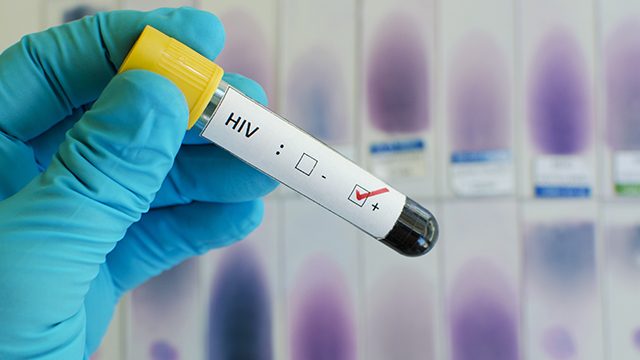SUMMARY
This is AI generated summarization, which may have errors. For context, always refer to the full article.

MANILA, Philippines – The world has seen a continued spread of Human Immunodeficiency Virus and Acquired Immune Deficiency Syndrome (HIV/AIDS) epidemic over the past 3 decades.
The fight against HIV/AIDS has been more challenging with latest developments, such as easier access to social media, that contribute to the persistent spread of the virus.
UNAIDS has set the 90-90-90 target, which aims to virally suppress HIV/AIDS by 90% by 2020. While numerous efforts have been set in place to aid HIV-positive individuals, there is still a long way to go before this killer disease can be fully eradicated.
Rising numbers
The number of people living with HIV/AIDS has increased in the previous year. UNAIDS estimated about 36.9 million people suffering from the disease in 2017 – a record slightly higher than 2016 (about 36.7 million). Majority of those infected were adults.
|
35.1 million |
adults (15 years and above) |
|
1.8 million |
children (below 15 years) |
|
9.4 million |
unaware that they were living with HIV |
Of these, about 1.78 million cases were newly acquired.
Globally, 69% of estimated affected individuals come from Africa with an estimated 25.7 million individuals diagnosed with HIV/AIDS. This is the highest among all regions in the world.
Asia and the Pacific, where the Philippines belongs, comes second with an estimated 5.2 million HIV cases, while Western and Central Europe and North America have about 2.2 million.
On the upside, there’s been progress in the 2020 target of suppressing HIV by 90%. UNAIDS has tallied a total of 21.7 million people receiving antiretroviral therapy (ART) treatment.
|
3 out of 4 |
know their HIV status |
|
4 out of 5 |
undergoing treatment |
|
4 out of 5 |
virally suppressed |
In 2017 alone, an additional 2.3 million have been accessing treatment, marking the largest annual increase to date.
Decline in deaths
There has been a decline in deaths caused by HIV from 2000 to 2017. From 2016, the number of estimated HIV-related deaths has gone below the one million mark.
Africa has the highest number of estimated deaths with its Eastern and Southern areas at 380,000, and the Western and Central areas at 280,000. Asia and the Pacific follows closely with estimated deaths of 170,000 from 2017. (READ: HIV-AIDS epidemic: A call to action)
Tuberculosis remains the main cause of death among HIV patients, accounting for a third of all deaths.
HIV in Philippines on the rise
In 2017, UNAIDS estimated 68,000 Filipinos were diagnosed with HIV/AIDS, and the numbers continue to rise. According to the Philippine National AIDS Council, in 2018, as many as 32 Filipinos are diagnosed daily with HIV/AIDS.
The Department of Health has also previously said that the Philippines has one of the “fastest growing” HIV epidemics in the world with 57,134 cases recorded from January 1984 to July of this year.
From January to September 2018 alone, the HIV/AIDS and ART Registry of the Philippines (HARP) recorded a total of 8,533 new HIV infections, particularly in males.
|
8,066 |
new HIV-positive males |
|
467 |
new HIV-positive females |
Of these, 1,520 were diagnosed with advanced infection, or in clinical stage 3 or 4, as categorized by the World Health Organization.
Most newly-infected individuals diagnosed in 2018 come from the younger, millennial generation: 4,344 were aged 25-34, while 2,505 were aged 15-24. This phenomenon, health experts and advocates said, was brought by developments in social media that make finding sexual partners easier. (READ: Orgies and Tinder: Millennials are having sex, some with a deadly price)
Looking into regions, the National Capital Region has the most number of newly-infected Filipinos with 2,656, followed by CALABARZON with 1,406, and Central Luzon with 893.
HARP has also recorded 459 HIV/AIDS-related deaths in the Philippines this year, with the victims mostly male. – Rappler.com
Add a comment
How does this make you feel?
There are no comments yet. Add your comment to start the conversation.